Reader Keith recently wrote to me:
I read your write up on the Fisher 202T AM/FM preamp. You mentioned the Crosby MPX units that can’t be used but failed to mention the very late MPX-50 plug in unit that Fisher sold for the 100-T and 202-T. They work with today’s FM stereo.
Mea culpa. I did neglect to mention that fact. When the FCC approved an FM Stereo multiplex standard in April 1961, Fisher appears to have put their MPX-100 universal MPX adapter into production within a month of the FCC’s announcement.
Fisher also must have introduced the MPX-50 around the same time. The MPX-50 was designed for use with the FCC-approved GE-Zenith FM stereo multiplex system and was also intended to be used with Fisher models FM-100, 100-T and 202-T, all of which included provisions to add a multiplex decoder.
But before I get too far into that, let’s back up to early 1959 and see what Fisher was offering in the way of FM stereo multiplex decoders.
Model MPX-10
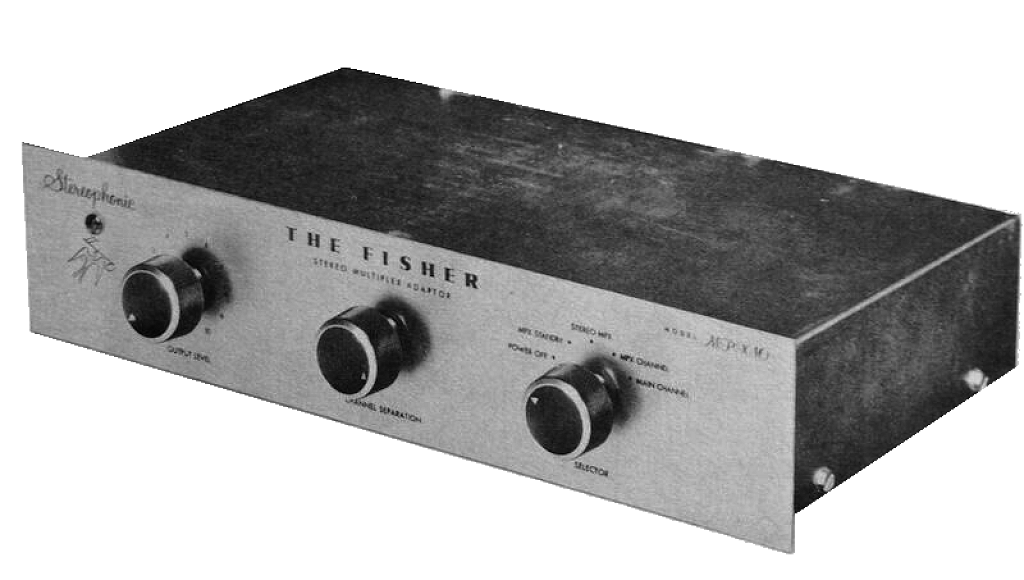
The Fisher model MPX-10 FM stereo multiplex decoder.
A method of transmitting and receiving FM broadcasts in stereo became available in the latter part of 1958. It was developed by Murray G. Crosby of Crosby Laboratories and was thereafter known as the Crosby system. By November 1958, companies such as Eico, Karg and Sargent-Rayment had announced their intentions to build Crosby FM stereo multiplex decoders, and Madison Fielding already had one on the market.[1]
At the time, Fisher announced that they would wait until the FCC issued guidance on which FM stereo standard they would prefer.[2] Other FM stereo multiplex standards had been developed by other companies, including Halstead, EMI, GE and Zenith.[3]
However, we know that Fisher chose not to wait after all and placed their MPX-10 FM stereo multiplex decoder on the market in early 1959. The MPX-10 was designed for use with the Crosby system.
The MPX-10 was a stand-alone decoder designed for use in conjunction with an FM tuner which had a multiplex jack. This decoder was also available with an optional cabinet. It was also designed for integration into a Fisher console stereo unit, although very few were likely built.
As the Crosby system is incompatible with today’s FM Stereo standard, an MPX-10 is useful only as a historical artifact.
Model MPX-20
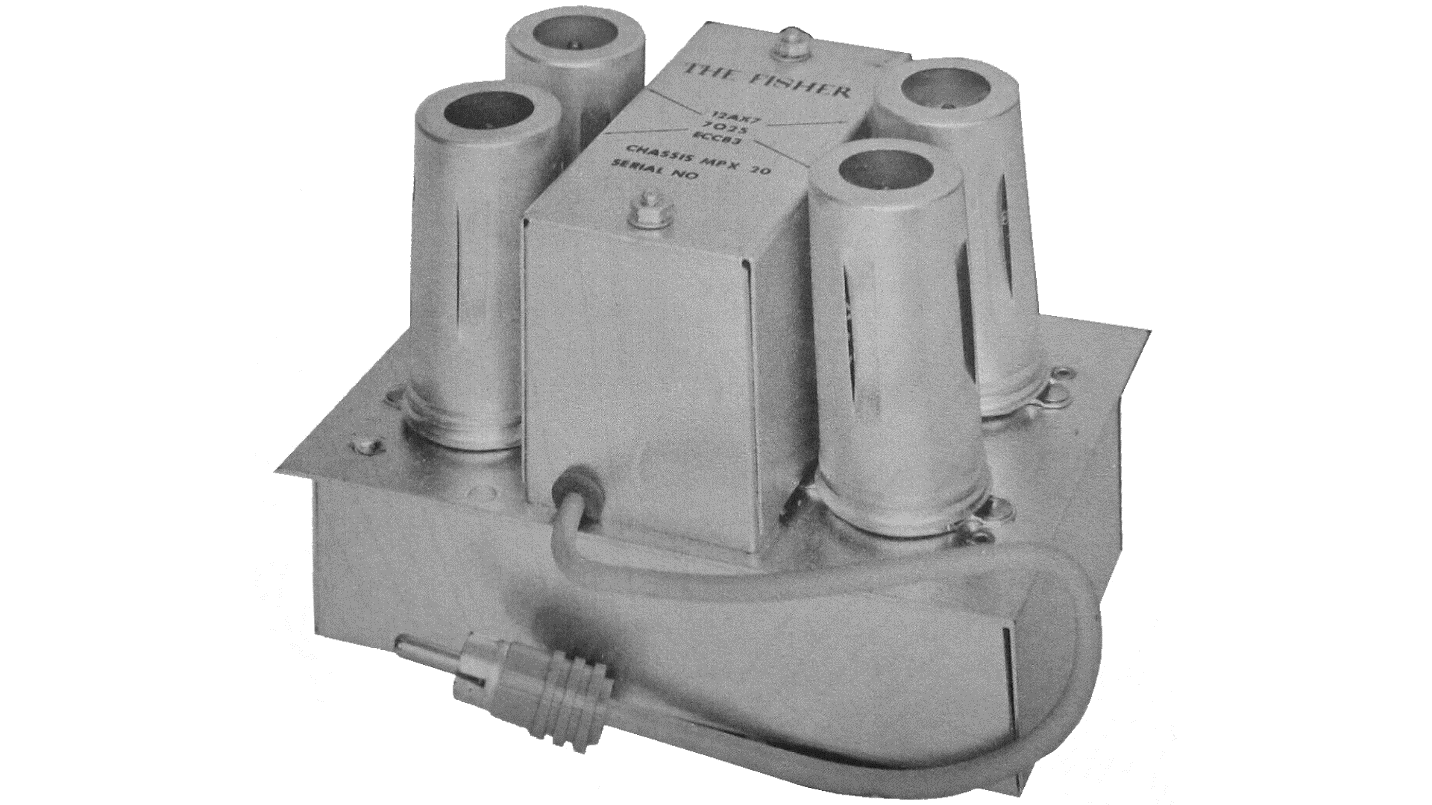
The Fisher model MPX-20 FM stereo multiplex decoder.
Apparently, Fisher was so confident in the Crosby system becoming the approved standard by late summer-early fall 1959 that the company issued an FM tuner, and two AM-FM tuners with built-in preamplifiers – the FM-100, the 100-T and the 202-T, respectively.
All three of these units came from the factory with a removable plate and a nine-pin socket with a “dummy” plug inserted at the factory. The “dummy” plug allowed FM monaural reception in left and right channels. The open space on the chassis (covered by the removable plate) was intended for use with the MPX-20 decoder, and the three tuners were designed to make full use of the MPX-20 if it were installed in the tuner.
The MPX-20 came with a cable with the necessary nine-pin plug, as well as a separate cable and RCA plug intended to plug into the MPX OUTPUT jack inside the tuner. It was intended to give any of the three Fisher tuners listed above the capability to receive FM Stereo broadcasts.
Surprise – Crosby is not chosen
As tests continued on the various competing systems, it was found that the GE and Zenith systems were virtually identical, and both were combined into a single system.
In the late 1950s, as today, many FM radio stations relied upon income from use of a Subsidiary Communications Authorization (SCA) signal. Simply put, this allows an FM station to broadcast an additional signal on a subcarrier which can only be received by specialized equipment not generally available to the general public. One of the main SCA services included background music for stores, although SCA was also used for other purposes.[4]
It was discovered that the Crosby system was incompatible with the use of SCA. FCC tests in 1960 found that the GE-Zenith system was compatible with 67 kHz SCA, but not 41 kHz.[5] This meant that the Crosby system was not going to be accepted by most FM radio stations.
Oops. So much for the Crosby system, which was superior to GE-Zenith in many ways – but the inability to use SCA is what ultimately killed it.
In April 1961, the FCC chose the GE-Zenith system as the approved standard.
Model MPX-50
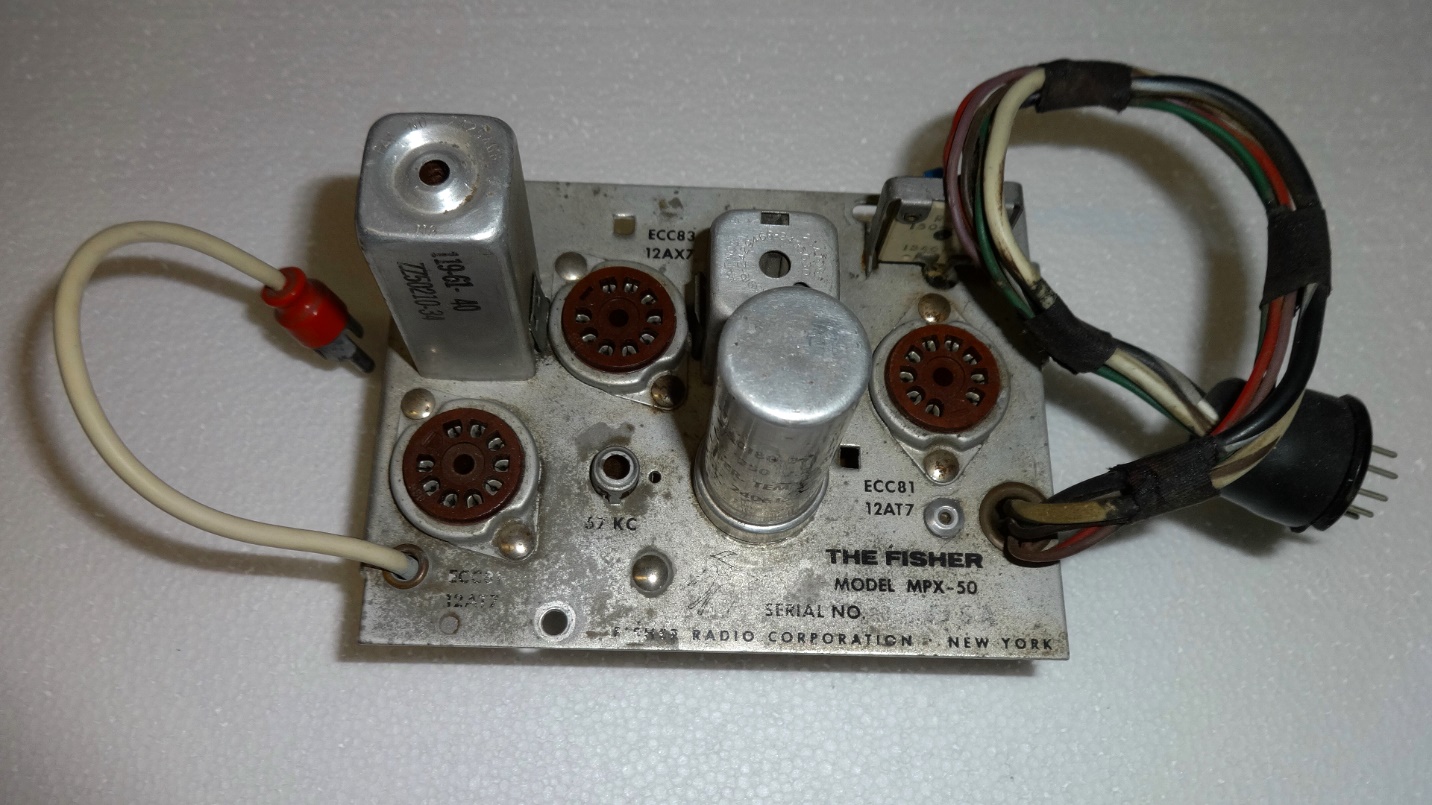
The Fisher model MPX-50 FM stereo multiplex decoder. Photo courtesy Keith Schubert
The Fisher model MPX-50 FM stereo multiplex decoder appears to have been Fisher’s initial reaction to the FCC’s having selected the GE-Zenith system. It was designed for drop-in installation into the Fisher FM-100 tuner, or their 100-T or 202-T tuner-preamps, to allow any of those three units to receive the new GE-Zenith FM Stereo signals. The MPX-50 also included a cable with a nine-pin plug and a separate cable with RCA plug, as did the MPX-20.
The new MPX-50 only used three tubes, in contrast to the MPX-20’s use of four tubes.
I have not seen any documentation stating exactly when the MPX-50 was introduced, but it was most likely soon after the FCC made its decision on an FM Stereo standard in April 1961.
Model MPX-100
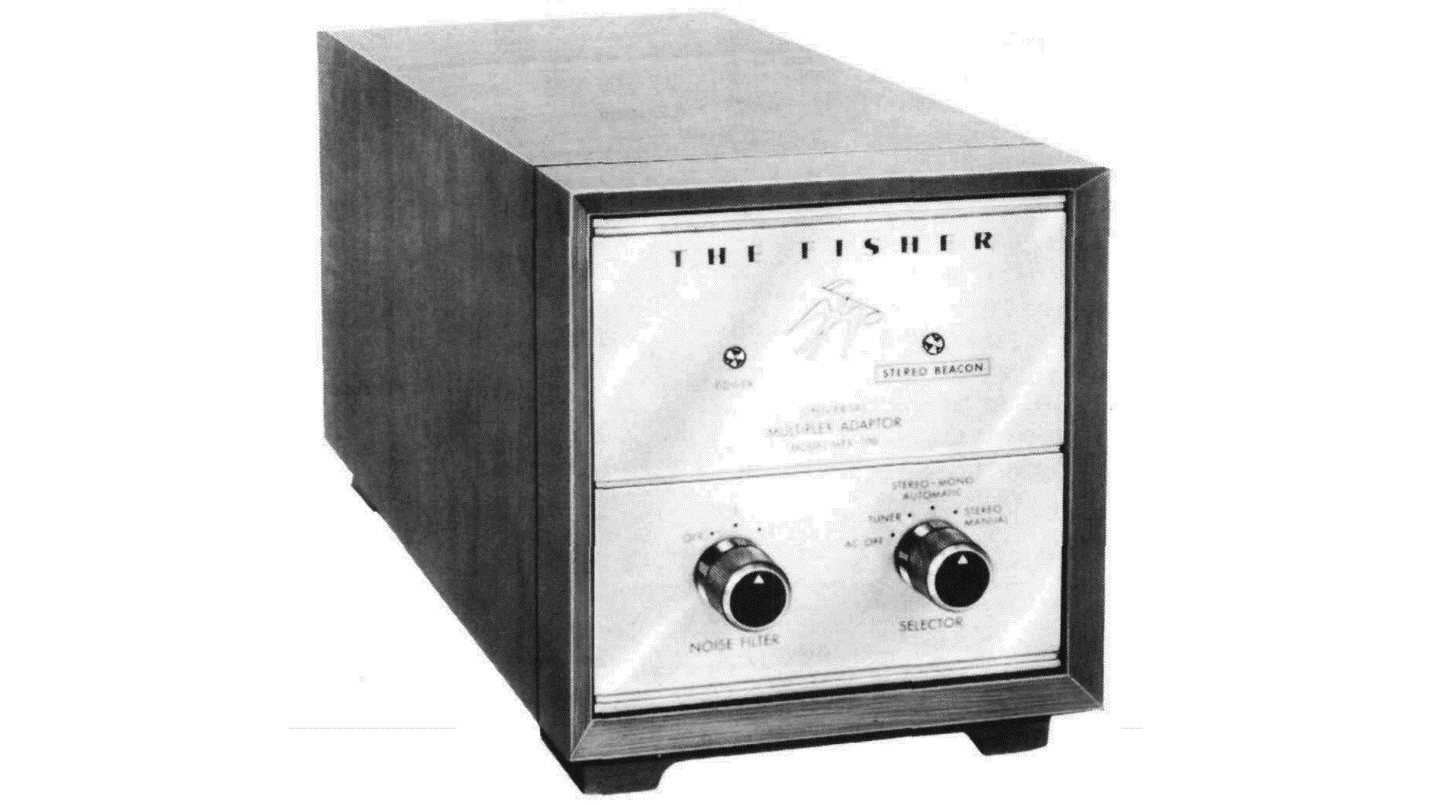
The Fisher model MPX-100 universal FM stereo multiplex decoder.
Around May 1960[6], Fisher announced their new MPX-100, a stand-alone unit designed as an interface between an FM mono tuner and a stereo amplifier. By using the MPX-100, owners of Fisher equipment could now adapt their FM tuners for FM stereo. And the MPX-100 could also be used with other brands of tuners to accomplish the same purpose.
It used five tubes and could be purchased with an optional wood cabinet.
Model WX
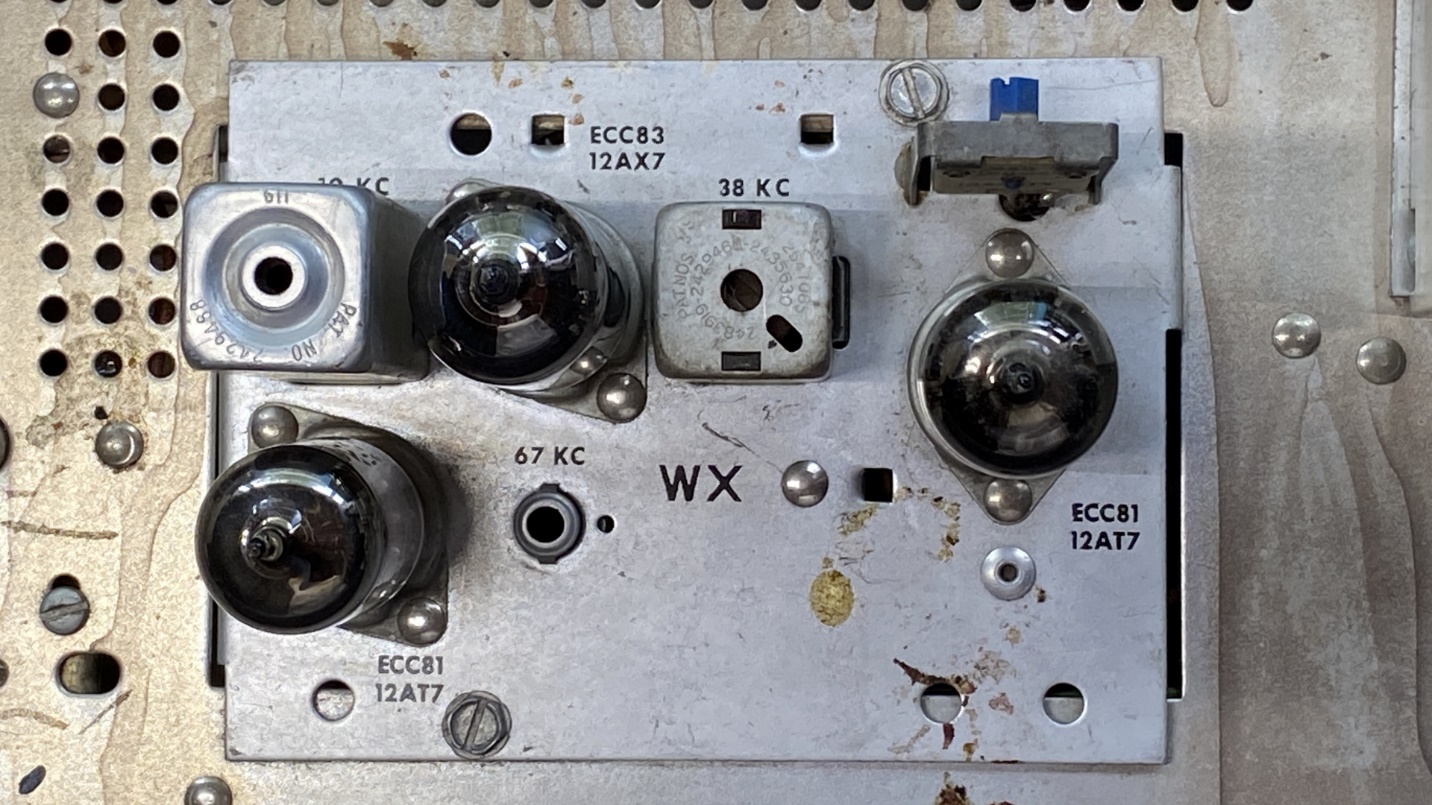
The Fisher model WX FM stereo multiplex decoder installed in an FM-100-B tuner. Author’s collection.
When Fisher introduced its 1962 model lineup of equipment, all of their new tuners and receivers included a multiplex decoder capable of receiving the GE-Zenith FM Stereo signals. This was made possible by the use of Fisher’s WX multiplex decoder.
The WX used three tubes and was designed for installation in Fisher’s 1962 and 1963 tuners and receivers. As it was sold with these units, it was not available separately.
Many WX decoders only have a “W” stamped on top of them instead of “WX”.
The WX decoder was designed to allow the FM tuning indicator “eye” tube (EM84) to also function as a stereo indicator, if it was switched into this function by the user.
Model MPX-200
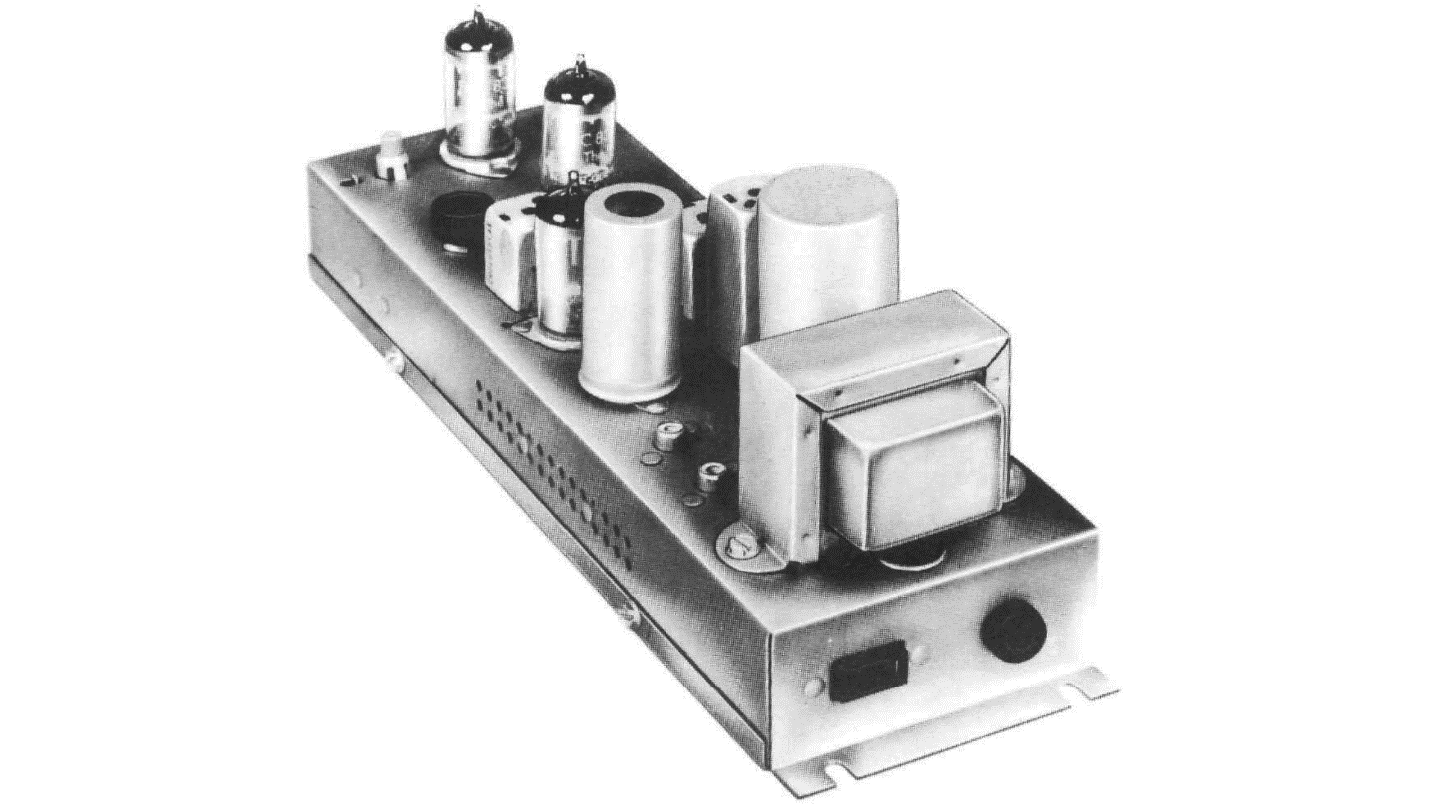
The Fisher model MPX-200 FM stereo multiplex decoder.
For owners of older Fisher stereo consoles, the company made available their MPX-200 multiplex decoder in the fall of 1961. The unit was sold separately and, like the MPX-100, could adapt any FM mono tuner to FM stereo. It did not come with a cabinet. It was designed for concealed installations.
Well, that covers all of Fisher’s early FM stereo multiplex decoders. Fisher also made other decoders for installation into various Fisher equipment over the next few years, but the discussion of these falls outside the scope of this article.
For further reading, I highly recommend you follow these links (both take you to the AudioKarma website):
The Statesman (202-T) Wide-Band AM-FM Multiplex Tuner Preamp
The author wishes to express his appreciation to Keith Schubert for giving him the idea for this article, and for the MPX-50 photo he so kindly furnished for this article.
- Hi-Fi & Music Review, November 1958, pp. 54-56. ↑
- Ibid. ↑
- “FM broadcasting”, https://en.wikipedia.org/wiki/FM_broadcasting ↑
- “Subsidiary communications authority”, https://en.wikipedia.org/wiki/Subsidiary_communications_authority ↑
- “Crosby system”, https://en.wikipedia.org/wiki/Crosby_system ↑
- “Fisher MPX Adapters”, https://audiokarma.org/forums/index.php?threads/fisher-mpx-adapters.412418/ ↑